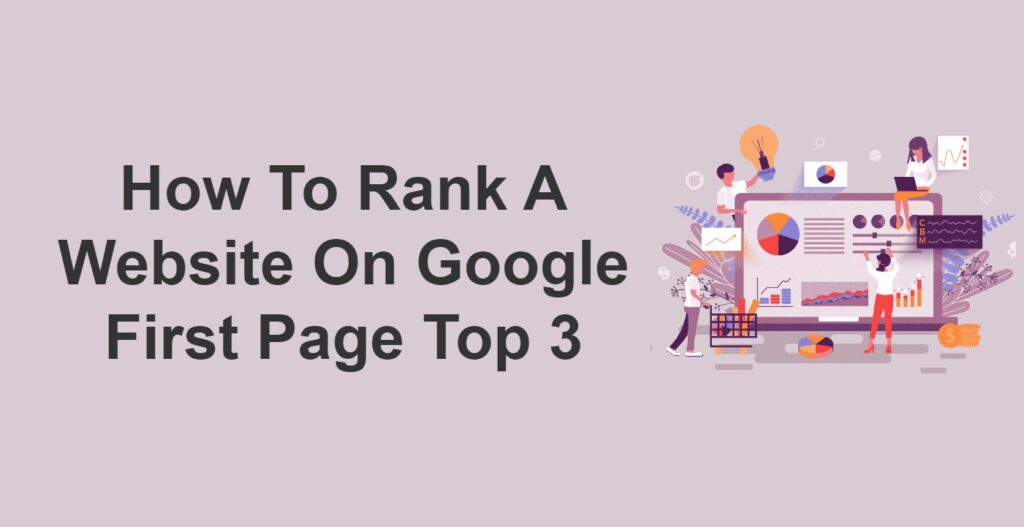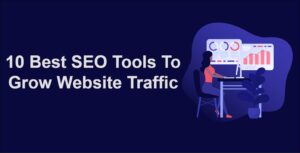Ranking a website on Google’s first page is a coveted achievement that can significantly boost your online visibility, drive organic traffic, and ultimately lead to business success. However, the world of search engine optimization (SEO) is complex and ever-evolving, requiring a strategic approach to achieve desired results.
In this comprehensive guide, we’ll walk you through actionable steps and best practices to help your website climb the ranks and secure a spot on Google’s coveted first page.
Achieving a first-page ranking on Google requires a combination of strategic planning, diligent execution, and ongoing optimization. By following the steps outlined in this guide, you’ll be well-equipped to enhance your website’s visibility, attract organic traffic, and position yourself as a credible authority within your industry.
SEO is an ongoing process, and staying proactive in adapting to changes and trends will help you maintain and improve your rankings over time. As you implement these strategies, keep your focus on delivering value to your audience, and let the journey to first-page success be a rewarding one that brings your website the recognition and traffic it deserves.
Understanding the Importance of First-Page Rankings
Before diving into the strategies, let’s explore why ranking on Google’s first page matters and the potential impact it can have on your online presence.
1. The Power of First-Page Rankings
Securing a spot on the first page of Google’s search results can significantly increase your website’s visibility, credibility, and click-through rates. Research shows that the majority of users rarely venture beyond the first page, making it essential to aim for top-tier rankings.
2. Enhanced Organic Traffic
Websites on the first page receive the lion’s share of organic traffic, as users are more likely to click on the top-ranked results. This increased visibility can drive a steady stream of targeted visitors to your website.
3. Credibility and Trust
First-page rankings are often associated with authority and trustworthiness. Users are more inclined to trust websites that appear at the top of the search results, leading to higher engagement and conversion rates.
A Step-by-Step Guide to Ranking on Google’s First Page
Now that we understand the significance of first-page rankings, let’s delve into the actionable steps and strategies that can help elevate your website’s position in the search results.
1. Conduct Comprehensive Keyword Research
Keyword research forms the foundation of your SEO strategy. Identify relevant keywords and phrases that your target audience is likely to search for. Utilize tools like Google Keyword Planner, SEMrush, or Ahrefs to uncover high-volume and low-competition keywords.
2. Optimize On-Page Elements
On-page optimization involves optimizing individual web pages to improve their relevance to specific keywords. Pay attention to:
a) Title Tags: Craft compelling and descriptive title tags that accurately reflect the content of each page while incorporating your target keywords.
b) Meta Descriptions: Write informative meta descriptions that encourage users to click by highlighting the value of your content.
c) Headers (H1, H2, H3): Organize your content using headers to improve readability and signal the importance of key sections to search engines.
d) URL Structure: Create clean and descriptive URLs that include relevant keywords, making it easier for both users and search engines to understand your content.
3. Develop High-Quality, Relevant Content
Content is king in the world of SEO. Create valuable, informative, and engaging content that addresses the needs and interests of your target audience. Incorporate your target keywords naturally and provide comprehensive information that positions you as an authoritative resource.
4. Build High-Quality Backlinks
Backlinks remain a crucial ranking factor. Earn high-quality backlinks from authoritative and relevant websites within your industry. Focus on a combination of guest posting, influencer outreach, and content promotion to attract natural, organic links.
5. Ensure Mobile-Friendly and Fast Loading Pages
Google prioritizes mobile-friendliness and page speed. Optimize your website for mobile devices and ensure that pages load quickly across all devices. Use tools like Google PageSpeed Insights to identify and address performance issues.
6. Leverage Technical SEO Best Practices
Technical SEO ensures that search engines can crawl, index, and understand your website’s content. Focus on:
a) Site Structure: Organize your website’s structure for easy navigation and logical hierarchy.
b) XML Sitemap: Create an XML sitemap to help search engines discover and index your pages efficiently.
c) Robots.txt: Use a robots.txt file to guide search engine crawlers and prevent them from indexing certain pages if necessary.
d) HTTPS Security: Ensure your website uses HTTPS encryption to provide a secure browsing experience for users.
e) Schema Markup: Implement schema markup to provide context and additional information about your content to search engines.
7. Monitor and Analyze Performance
Regularly monitor your website’s performance using tools like Google Analytics and Google Search Console. Analyze key metrics such as organic traffic, click-through rates, and keyword rankings. Use this data to make informed adjustments to your strategy.
Common Mistakes to Avoid
Avoiding common SEO pitfalls is just as important as implementing best practices. Here are a few mistakes to steer clear of:
1. Keyword Stuffing
Overloading your content with keywords can lead to poor user experience and potential penalties from search engines. Focus on natural, relevant keyword usage.
2. Neglecting User Experience
A user-friendly website is essential for both users and search engines. Ensure easy navigation, fast load times, and mobile responsiveness.
3. Ignoring Local SEO
For businesses with a local presence, neglecting local SEO can hinder visibility within your target geographic area. Optimize your Google My Business profile and encourage customer reviews.
4. Neglecting Backlink Quality
While backlinks are valuable, prioritize quality over quantity. Low-quality, spammy backlinks can harm your website’s reputation and rankings.
5. Failing to Adapt to Algorithm Updates
Search engine algorithms evolve regularly. Stay informed about updates and adapt your strategy to align with the latest guidelines.





